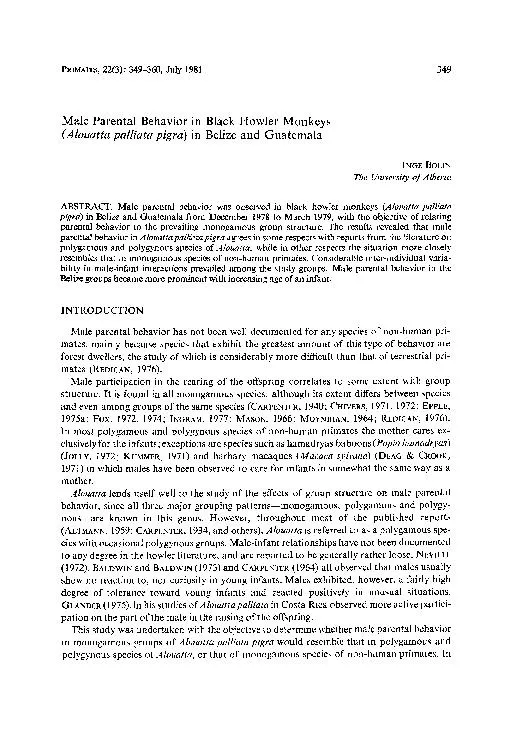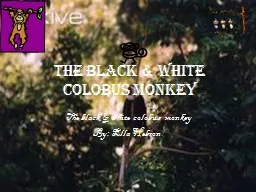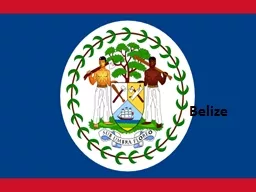PDF-Parental Behavior in Black Howler Monkeys palliata pigra) Belize and G
Author : trish-goza | Published Date : 2016-06-12
223 349360 July 1981 349 BOLIN The University of Alberta ABSTRACT Male parental behavior was observed in black howler monkeys Alouatta palliata pigra in Belize and
Presentation Embed Code
Download Presentation
Download Presentation The PPT/PDF document "Parental Behavior in Black Howler Monkey..." is the property of its rightful owner. Permission is granted to download and print the materials on this website for personal, non-commercial use only, and to display it on your personal computer provided you do not modify the materials and that you retain all copyright notices contained in the materials. By downloading content from our website, you accept the terms of this agreement.
Parental Behavior in Black Howler Monkeys palliata pigra) Belize and G: Transcript
Download Rules Of Document
"Parental Behavior in Black Howler Monkeys palliata pigra) Belize and G"The content belongs to its owner. You may download and print it for personal use, without modification, and keep all copyright notices. By downloading, you agree to these terms.
Related Documents














